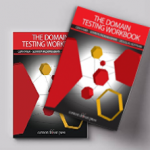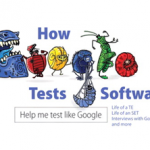Introduction
Software Testing 3.0 is a strategic end-to-end framework for change based upon a strategy to drive testing activities, tool selection, and people development that finally delivers on the promise of software testing. For more details on the evolution of software testing and Software Testing 3.0 see:
Also see a previous case study on Software Testing 3.0 principals in action: Software Testing 3.0: Case Study #1
Following is a second case study of Software Testing 3.0 principals in action.
Testing Mature Software that was Never Tested
| Environment Prior to LogiGear
A networking software company was testing core back-end functionality of their networking software manually utilizing a high-cost, on-shore based testing partner using manual testing methods. Because of the time consuming nature of manual testing, and the high cost of the on-shore manual testing partner:
- The company was not testing the GUI component of their solution that they deemed to be “mature” and not subject to a lot of change.
- The company’s customers were finding GUI bugs with every new release.
|
|
4,000 automated test cases
Coverage expanded from 0% to 90%
Automated GUI testing in only 20 machine hours
|
|
LogiGear implemented an automated testing program that made use of:
- Low-cost off-shore LogiGear testing resources in Vietnam. These resources are all trained by LogiGear University in Software Testing 3.0 concepts and tools.
- TestArchitectT, a tool set that integrates the latest methodologies and technologies in one easy-to-use package.
LogiGear has created an automated software testing program for this customer that:
- Has implemented 4,000 automated software test cases for the GUI software
- Expanded testing coverage from 0% to over 90% of the functionality of their application’s GUI
- Runs the entire automated test suite in only 20 machine hours
- Finds bugs that were previously found by the company’s customers helping to improve customer satisfaction with the software and lowering the burden on the vendor’s support staff
|
|
Generally accepted industry estimates indicate that bugs found by customers are at least 10 times more expensive than those found by software testing prior to release!
See: Quality Doesn’t Just Happen, By Judy McKay, CIO, May 24, 2007
|
|
Next Up
LogiGear’s testing resources are now moving on to automating testing for search and data import functionality. In the future, LogiGear will also be implementing an automated software testing program with low-cost Vietnam-based testing resources for the company’s back-end software replacing the existing expensive on-shore manual testing.
 LogiGear Corporation LogiGear Corporation
LogiGear Corporation LogiGear Corporation provides global solutions for software testing, and offers public and corporate software-testing training programs worldwide through LogiGear University. LogiGear is a leader in the integration of test automation, offshore resources and US project management for fast and cost-effective results. Since 1994, LogiGear has worked with hundreds of companies from the Fortune 500 to early-stage startups, creating unique solutions to exactly meet their needs. With facilities in the US and Vietnam, LogiGear helps companies double their test coverage and improve software quality while reducing testing time and cutting costs. For more information, contact Joe Hughes + 01 650.572.1400 |
LogiGear Corporation provides global solutions for software testing, and offers public and corporate software testing training programs worldwide through LogiGear University. LogiGear is a leader in the integration of test automation, offshore resources and US project management for fast, cost-effective results. Since 1994, LogiGear has worked with Fortune 500 companies to early-stage start-ups in, creating unique solutions to meet their clients’ needs. With facilities in the US and Viet Nam, LogiGear helps companies double their test coverage and improve software quality while reducing testing time and cutting costs.



















